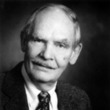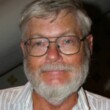3001: The Final Odyssey
Description
More Details
Subjects
Similar Series From Novelist
Similar Titles From NoveList
Similar Authors From NoveList
Published Reviews
Booklist Review
The rousing, stand-alone conclusion to the influential Space Odyssey saga (2001: A Space Odyssey, 2010: Odyssey Two, and 2061: Odyssey Three) revives astronaut Frank Poole, frozen in deep space ever since, 1,000 years ago, he became HAL 9000's victim for a tour of humanity's future.
Publisher's Weekly Review
Frank Poole was the astronaut murdered by the berserk computer HAL in 2001: A Space Odyssey. In this third sequel to that classic novel, Poole is returned to life after his frozen body is recovered floating near Neptune. Much of the novel centers on Poole's reentry into society as, in a series of vignettes, he is introduced to the wonders of the year 3001. These include an enormous space habitat completely encircling the Earth and anchored by four gigantic space elevators; velociraptors genetically engineered for use as gardeners; and the braincap, a machine that allows the mind to absorb information almost instantaneously. Halfway through the novel, Poole travels to the former planet Jupiter, now the mini-sun Lucifer. There, he learns about the development, sparked by a mysterious monolith, of a civilization on Europa, about the banning of humanity from that Jovian moon, and about the occasional ghostly visitations of astronaut Dave Bowman (introduced in 2001) to the Lucifer system. Defying the ban, Poole lands on Europa and encounters both Dave and HAL, now fused together into one semi-autonomous program within the Europa monolith. From them, he learns that the monolith's signal broadcast a millennium ago was a request for further orders. He also learns that an answer is expected momentarily and that humanity won't be pleased by the result. It is only at this point that Clarke injects any real tension into his story. Unfortunately, the threat he imagines to humanity's future is dealt with somewhat offhandedly in a mere 30 pages; then the story ends. This novel is a must read for those who have followed the saga so far, but it's too thin to interest those new, or at least unfamiliar with, the series. Major ad/promo; first serial to Playboy; Literary Guild and Doubleday Book Club alternate selection; Science Fiction Book Club main selection; audio rights to Random House Audio; foreign rights sold in the U.K., Spain, Latin America, France, Japan, Brazil, Holland, Italy, Portugal and Sweden. (Mar.) (c) Copyright PWxyz, LLC. All rights reserved
Library Journal Review
Clarke, who began this now classic sf series with a short story, 2001: A Space Odyssey (made into an OscarR-winning film in 1968), brings us to the end of that long journey with this work. In 2001, a black monolith brings about the dawn of human consciousness and begins the evolutionary process that transforms ape into man. At the dawn of the 21st century, an identical monolith is uncovered on the moon that points the way to Jupiter. Dave Bowman and Frank Poole, astronauts aboard Discovery, and the computer HAL begin that long voyage. Only Bowman survives to encounter a third monolith on Jupiter's moon Europa. This encounter transformed him into something more and less than human. 3001 begins with the startling discovery of Poole, who is revived after his 1000-year sleep. Awakened into a world he never made, Poole struggles with the inhabitants of the Earth society into which he is reborn. Humans now reside not only on Earth but in awe-inspiring towers that reach beyond the atmosphere. They also have intellectual capabilities never dreamed of in Poole's time. But they live in dread of the three monoliths that dominate the solar system. Poole becomes their last hope for answers to the questions that the enigmatic monoliths pose. Clarke's prose, always grounded in science, has the uncanny ability to inspire a sense of awe. The mystery of the monoliths and their relationship to humanity is finally revealed, as is the transformed nature of Bowman and HAL. This is another fascinating journey by an unparalleled master in the sf world, and while this work is subtitled The Final Odyssey, Clarke does leave the door slightly ajarmaybe we'll be treated to 4001: The New Beginning. Highly recommended.Roxanna Herrick, Washington Univ. Lib., St. Louis (c) Copyright 2010. Library Journals LLC, a wholly owned subsidiary of Media Source, Inc. No redistribution permitted.
Kirkus Book Review
Fourth in Clarke's Odyssey series (2061: Odyssey Three, 1987, etc.). Here, at the beginning of the fourth millennium, the vacuum- frozen body of astronaut Frank Poole (murdered by poor mad computer HAL in the original 2001) is recovered and revived. Frank awakens to find he's a celebrity in an age of peace and plenty, with space elevators, inertia-less space drives, and miraculous teaching devices. Frank visits Jupiter (transformed into the mini-sun Lucifer in 2010: Odyssey Two) and ponders its ice-moon Europa, where a giant monolith is attempting to develop intelligence among the native lifeforms. And he meets that strange entity composed of Star Child Dave Bowman fused with a copy of now-sane HAL. Dubbed Halman by Frank, the entity warns of bad news arriving from the monolith's guiding intelligences 450 light-years distant: They've decided to destroy humankind. Europa's monolith, though, is just a supercomputer, not intelligent or self-aware, so Frank's associates decide to use Halman as a Trojan horse to infect the monolith with an irresistible computer virus--whereupon all the monoliths vanish. Clarke, while never uninteresting, long ago abandoned drama; here, he simply reports, with the dispassionate precision of HAL before he went bananas. (First serial to Playboy; Literary Guild alternate selection)
Booklist Reviews
At the opening of the third millennium, humanity is spreading throughout the solar system, terraforming Venus, and already settled on the moons of Jupiter. Enter one who is effectively a time traveler--astronaut Frank Poole, frozen in deep space ever since, a thousand years ago, he became HAL 9000's victim (as viewers of the movie 2001 will recall). The revived Poole makes a fine observer, through whom Clarke leads readers on a tour of humanity's future, and he is also the key to contact with David Bowman, last seen encrypted in a giant black monolith on Ganymede. And making contact with Bowman saves humanity, for the monolith was programmed by its creators to destroy humanity, a plan foiled after it is injected with a computer virus. 3001 can stand alone from its predecessors in Clarke's Space Odyssey saga and is an intelligent romp, distinguished by Clarke's usual and inimitable wit and an unusual (perhaps unwelcome) strain of grumpiness about religion. Expect demand for it as the conclusion to perhaps the most influential sf series ever--thanks to the movies--and supply generously. Science Fiction Book Club main selection. ((Reviewed January 1 & 15, 1997)) Copyright 2000 Booklist Reviews
Library Journal Reviews
In this fourth and final book in a 30-year publishing odyssey (following 2001, 2010, and 2061), 2001 astronaut Frank Poole, presumed dead and adrift in deep space near Jupiter, is recovered alive in the year 3001. Intent on saving humanity, he returns to Jupiter's satellite, Europa, to contact partner Dave Bowman, whose mind has become absorbed by a third monolith. Unfortunately, Clarke uses this book as a vehicle to showcase scientific ideas and breakthroughs at the expense of the story, spending too much time catching up Poole on what he's missed in the last 1000 years while failing to develop fully the current situation and rushing the conclusion. Recommended only to complete the quartet. Copyright 1998 Library Journal Reviews
Publishers Weekly Reviews
Frank Poole was the astronaut murdered by the berserk computer HAL in 2001: A Space Odyssey. In this third sequel to that classic novel, Poole is returned to life after his frozen body is recovered floating near Neptune. Much of the novel centers on Poole's reentry into society as, in a series of vignettes, he is introduced to the wonders of the year 3001. These include an enormous space habitat completely encircling the Earth and anchored by four gigantic space elevators; velociraptors genetically engineered for use as gardeners; and the braincap, a machine that allows the mind to absorb information almost instantaneously. Halfway through the novel, Poole travels to the former planet Jupiter, now the mini-sun Lucifer. There, he learns about the development, sparked by a mysterious monolith, of a civilization on Europa, about the banning of humanity from that Jovian moon, and about the occasional ghostly visitations of astronaut Dave Bowman (introduced in 2001) to the Lucifer system. Defying the ban, Poole lands on Europa and encounters both Dave and HAL, now fused together into one semi-autonomous program within the Europa monolith. From them, he learns that the monolith's signal broadcast a millennium ago was a request for further orders. He also learns that an answer is expected momentarily and that humanity won't be pleased by the result. It is only at this point that Clarke injects any real tension into his story. Unfortunately, the threat he imagines to humanity's future is dealt with somewhat offhandedly in a mere 30 pages; then the story ends. This novel is a must read for those who have followed the saga so far, but it's too thin to interest those new, or at least unfamiliar with, the series. Major ad/promo; first serial to Playboy; Literary Guild and Doubleday Book Club alternate selection; Science Fiction Book Club main selection; audio rights to Random House Audio; foreign rights sold in the U.K., Spain, Latin America, France, Japan, Brazil, Holland, Italy, Portugal and Sweden. (Mar.) Copyright 1998 Publishers Weekly Reviews






































